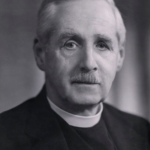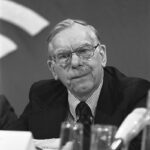World Council of Churches (WCC)
- Date of Founding
- Date of Abolition
- Location
The World Council of Churches came into being as a merger of two previous ecumenical organisations: the Life and Work movement and the Faith and Order movement. It was decided to create the WCC in Utrecht in 1938, but its official inauguration had to be postponed due to the Second World War to 1948.
The offices of Life and Work had been in Geneva and this was also the residence of the relatively young Dutch pastor Willem A. Visser ‘t Hooft, who assumed the position of general secretary in the new organisation, so the WCC chose Geneva as its headquarters too. The fact that Geneva was in neutral Switzerland would mean a lot for Visser t Hooft and his colleagues during the Second World War, because they could keep in touch with contacts in Nazi-occupied territories and set up smuggling routes for persons and documents through France, Spain, and Sweden to Great Britain.
After the Second World War, a WCC delegation, consisting of Visser t Hooft, Pierre Maury, Frederick baron Van Asbeck and others played a pivotal role in the reconciliation of churches in Germany, who had experienced a bitter division since 1933, with each other and with the international ecumenical fellowship. Under the leadership of Martin Niemöller and Hans Asmussen, the German churches reconstituted themselves and were welcomed as WCC members.
In the run-up to the first Assembly of the WCC in Amsterdam in 1948, themed Mans Disorder and Gods Design, the Cold War began to descend on Europe. Once again, it befell Visser t Hooft and his staff to warn for the danger of letting ideological and political differences tear apart the international spiritual community of the ecumenical movement. To the very last moment, it was hoped that the Russian Orthodox Church would attend the Assembly and become a member, but Soviet political pressure prevented that.
During the Assembly, a clash occurred between John Foster Dulles and Josef Hromádka over the question whether communism was evil by nature or whether it was somehow compatible with Christianity. Because of this feud, another section of the Assembly, led by Reinhold Niebuhr, C.L. Patijn and J.H. Oldham, drafted a statement around the concept of the responsible society, which proposed a middle ground in politics between capitalism and communism. Until halfway the 1950s, this concept would become the dominant template for ecumenical social and political thought, particularly when it could increasingly be applied to a specific form of European politics, as was done by Patijn and John C. Bennett. This dominance gradually came to an end when churches from former colonies and the developing world deemed the concept too Western, not accounting for the rapid social change their countries underwent.





